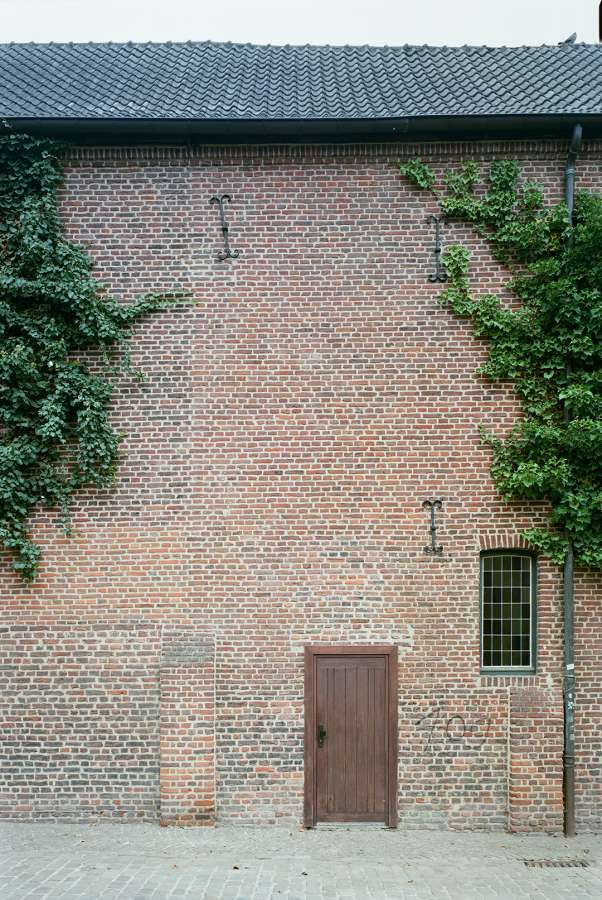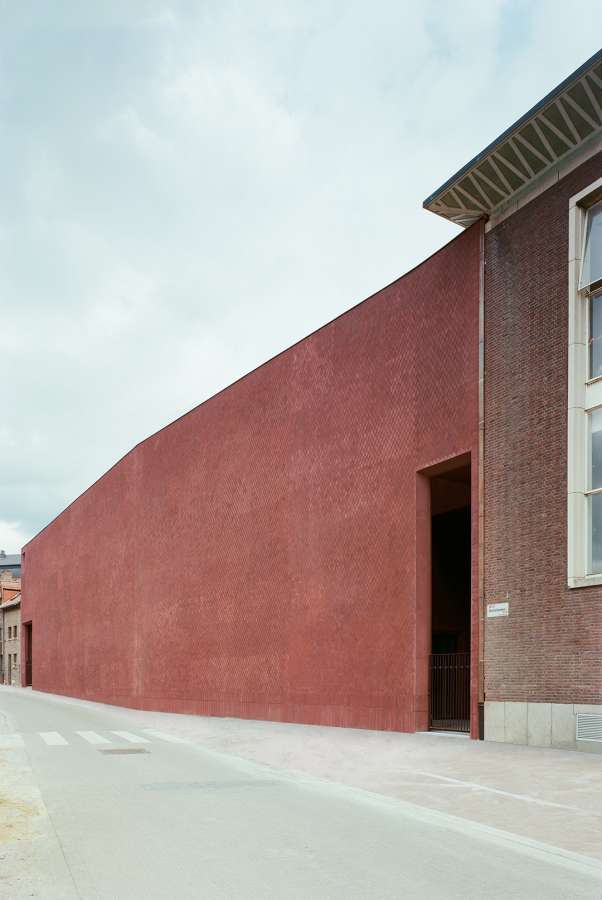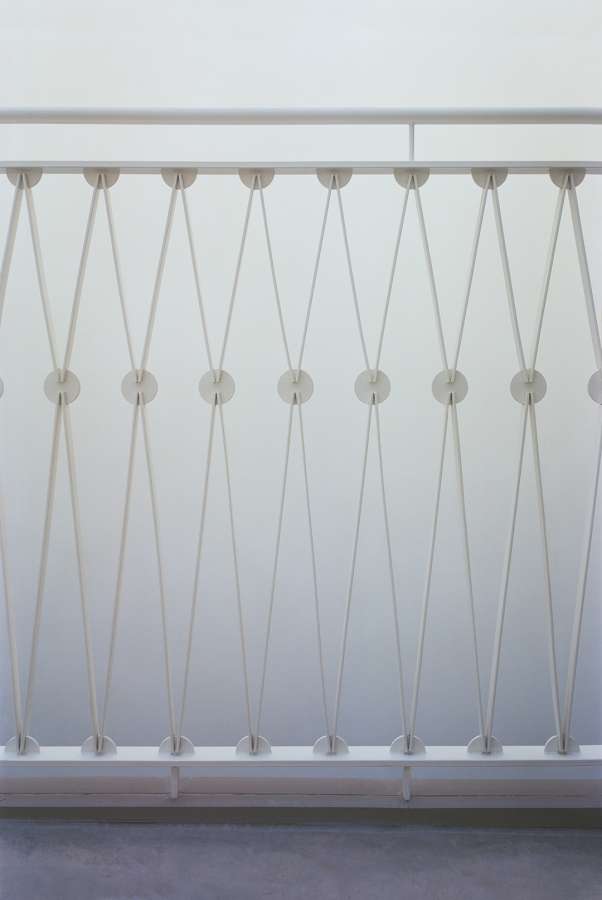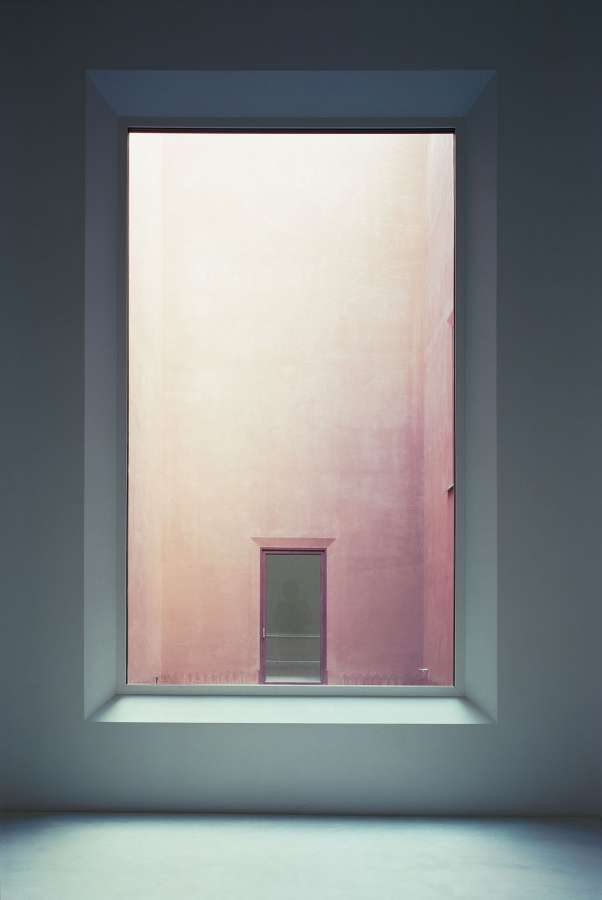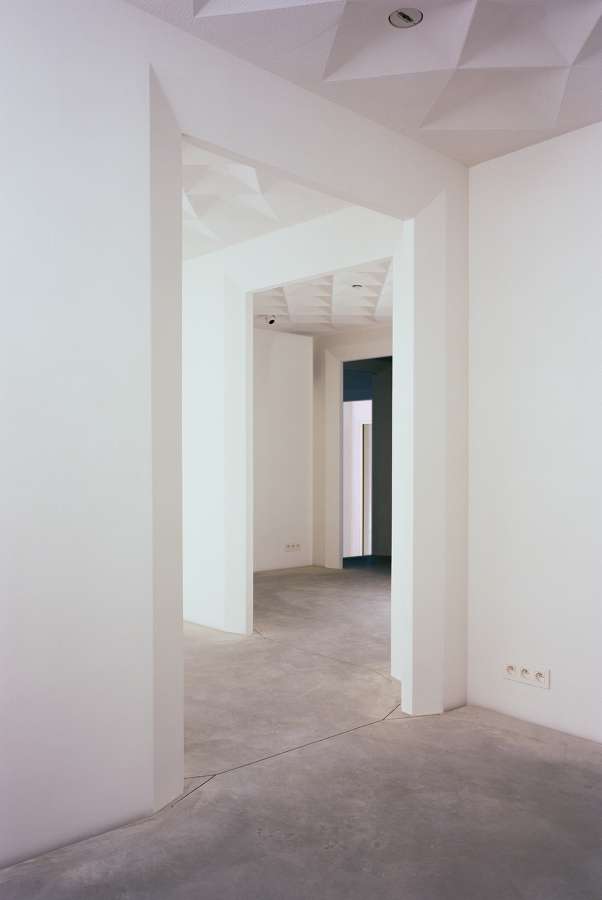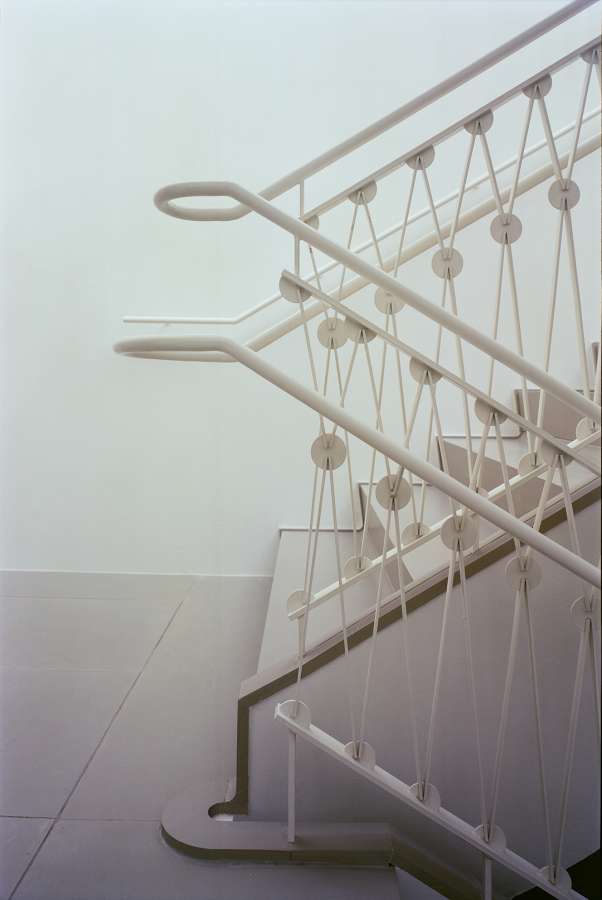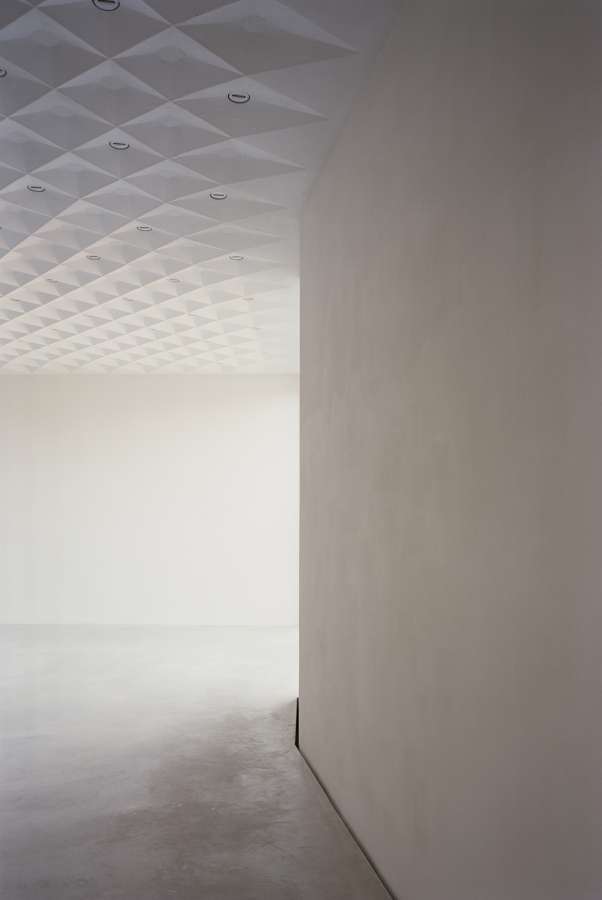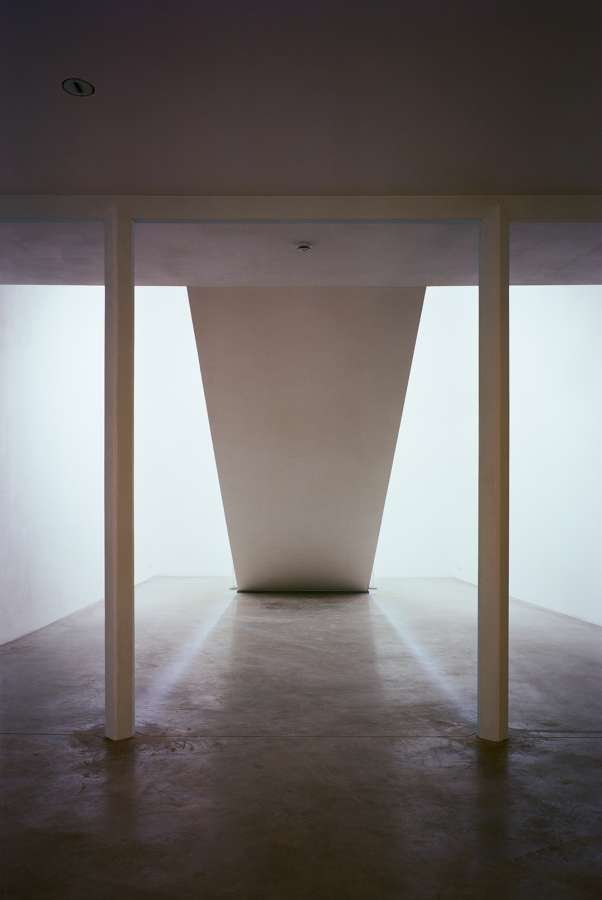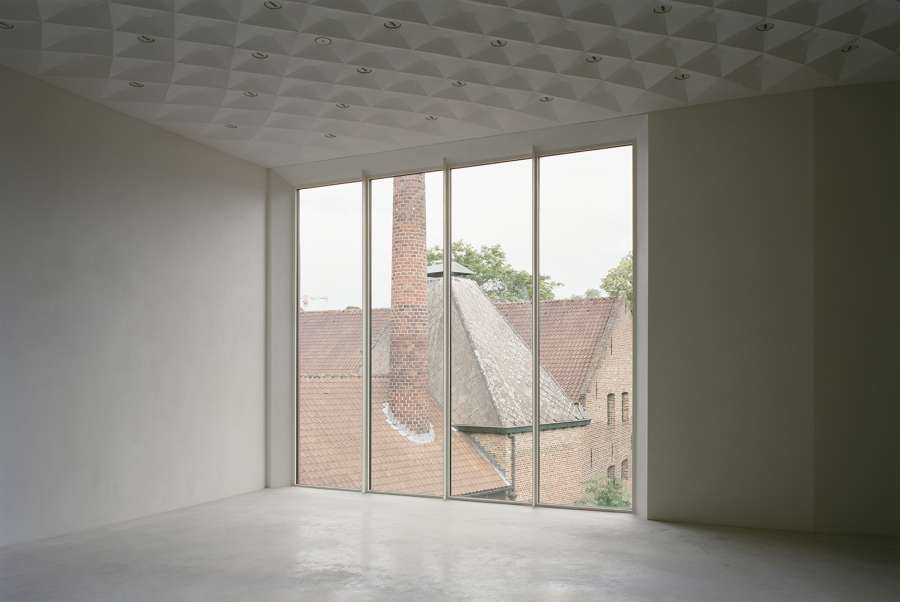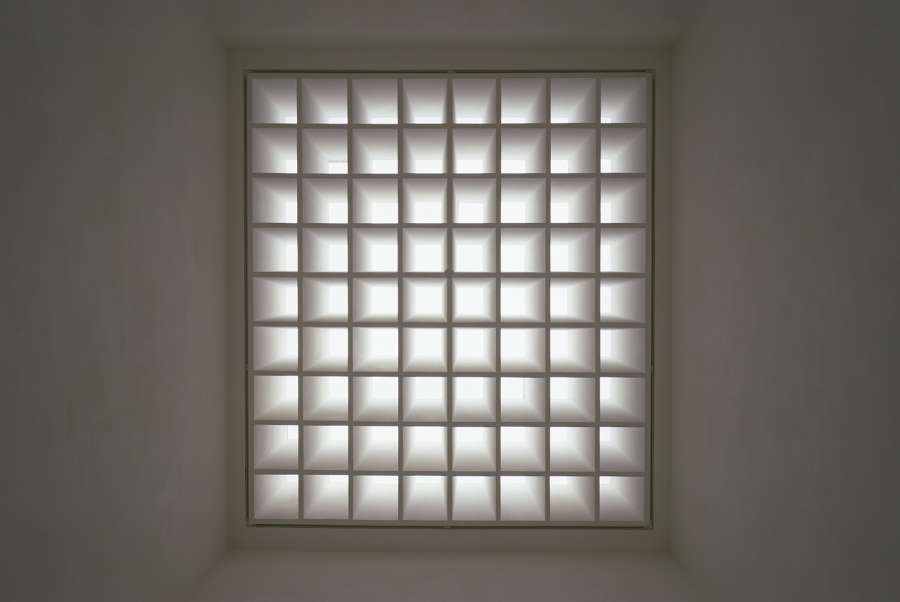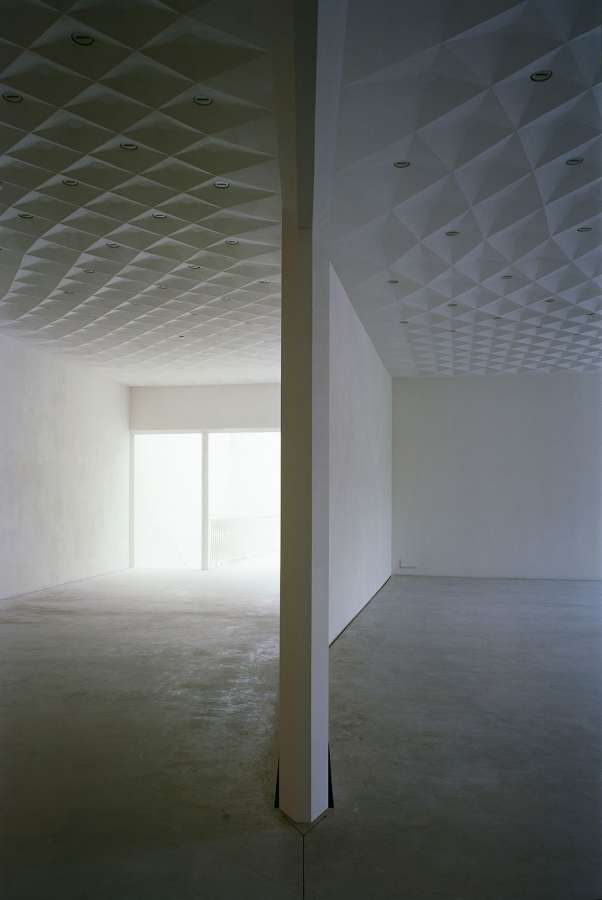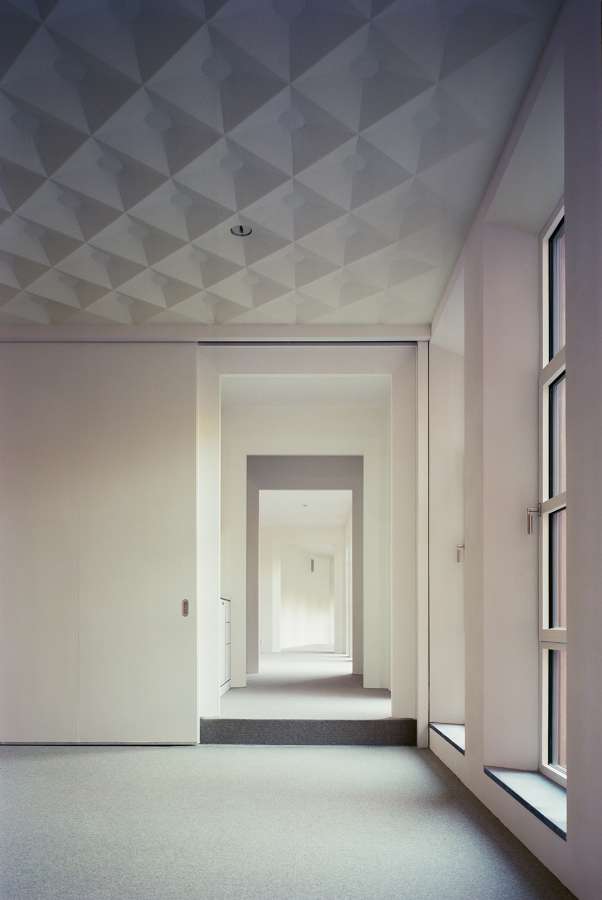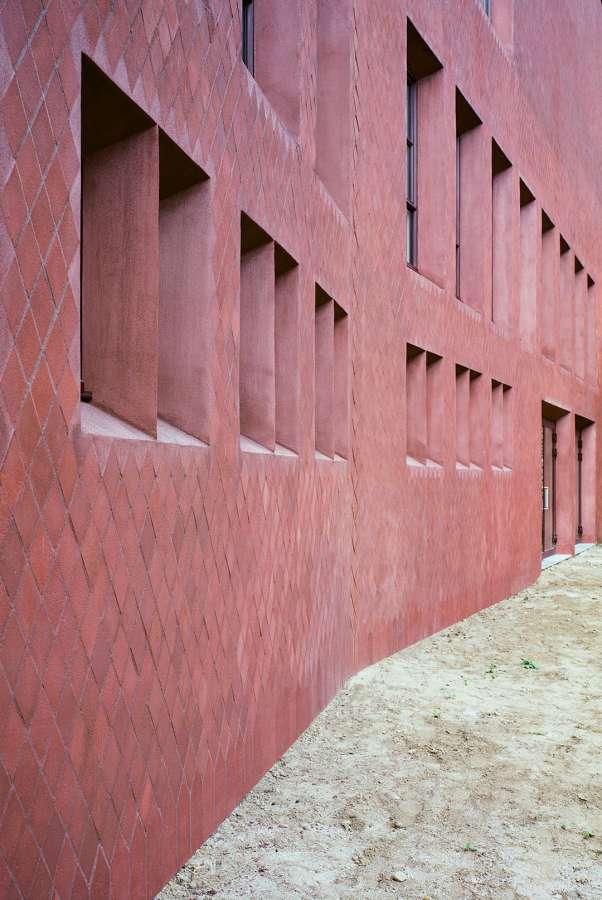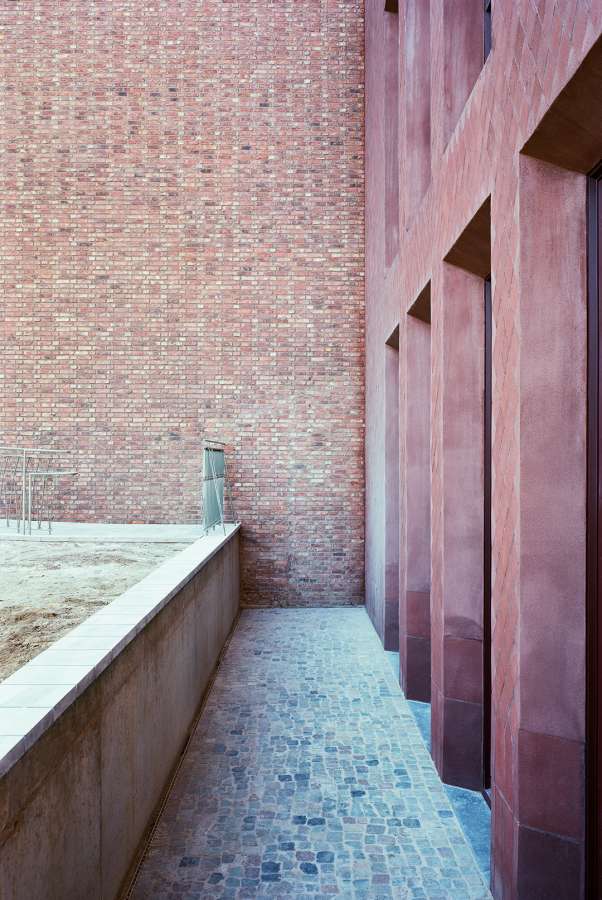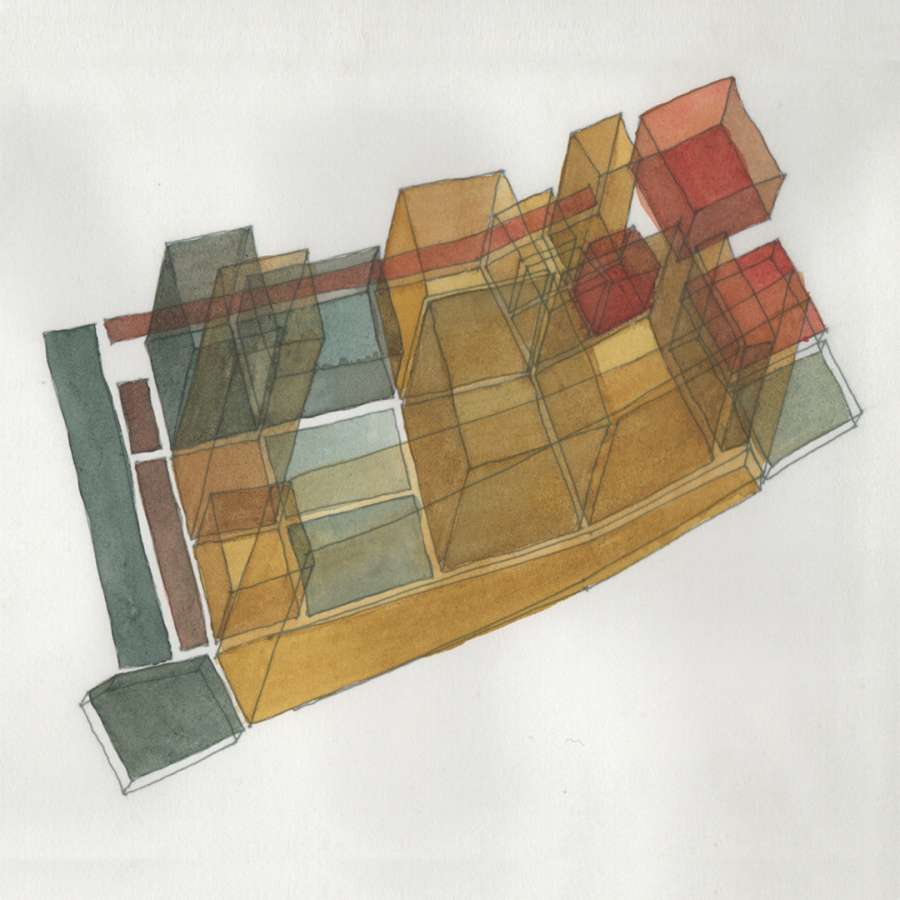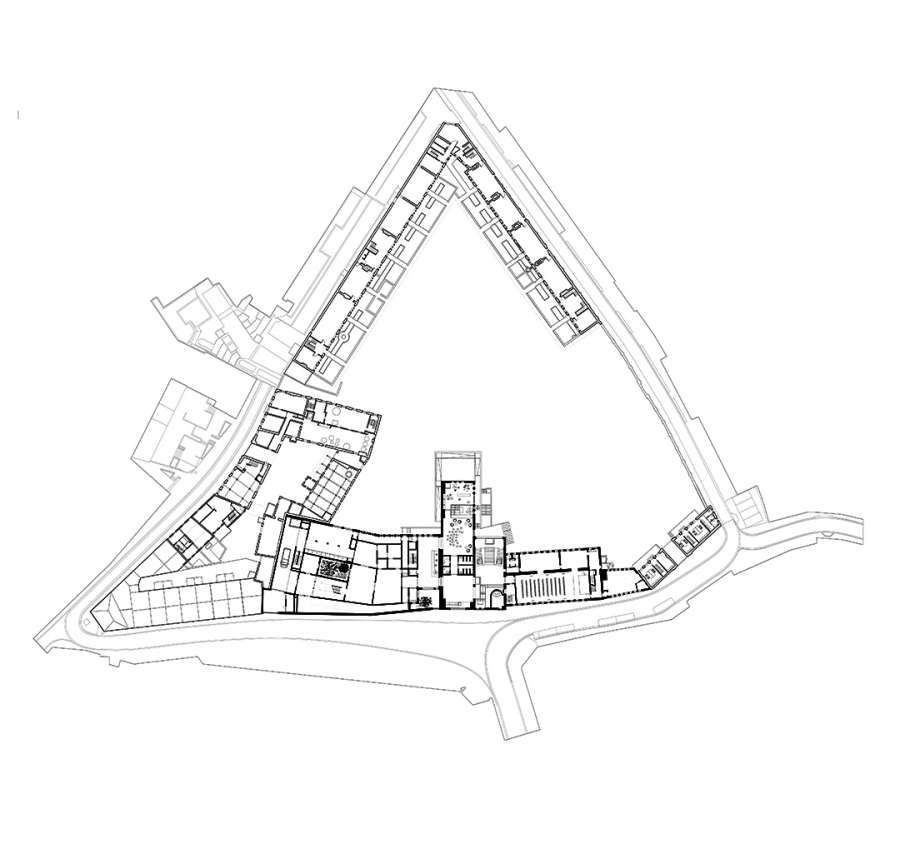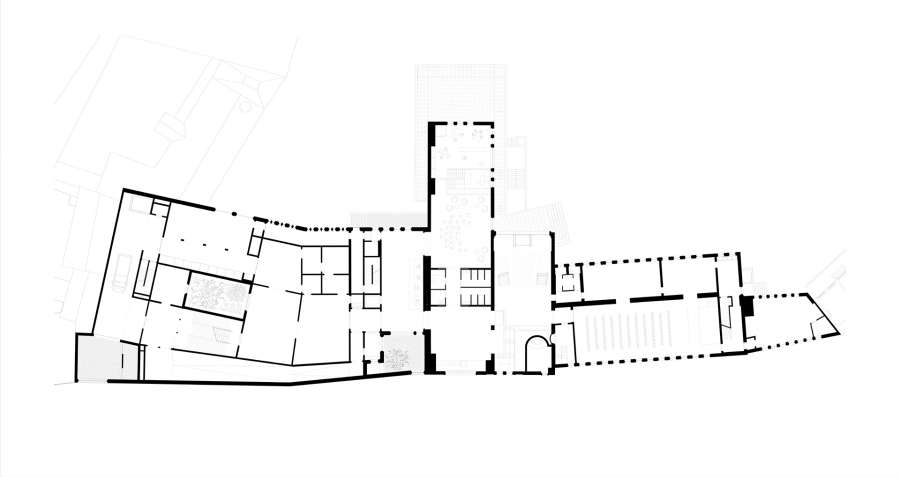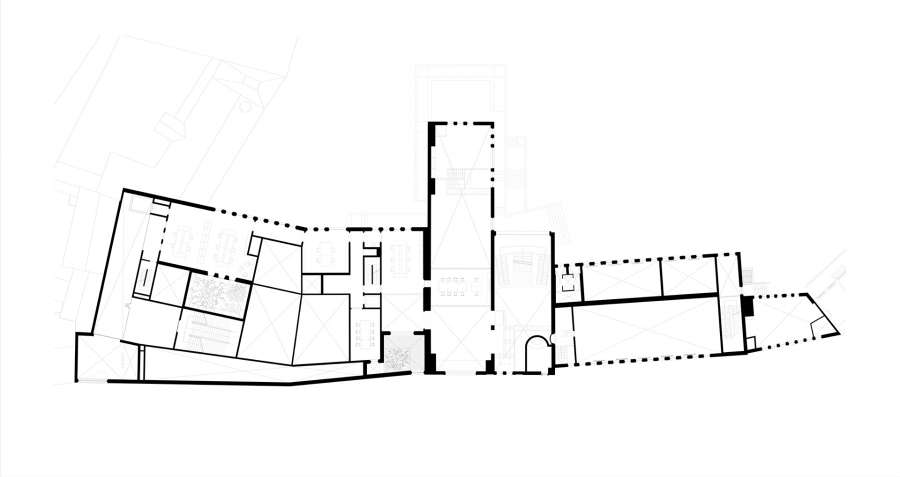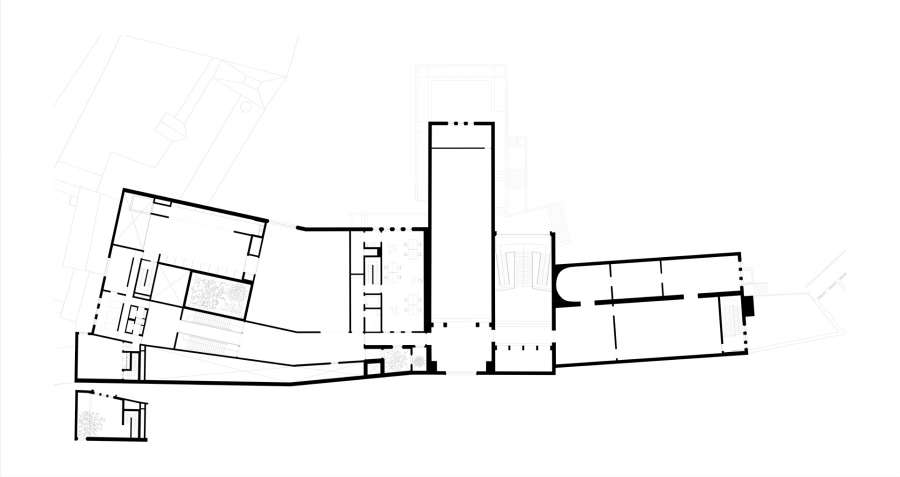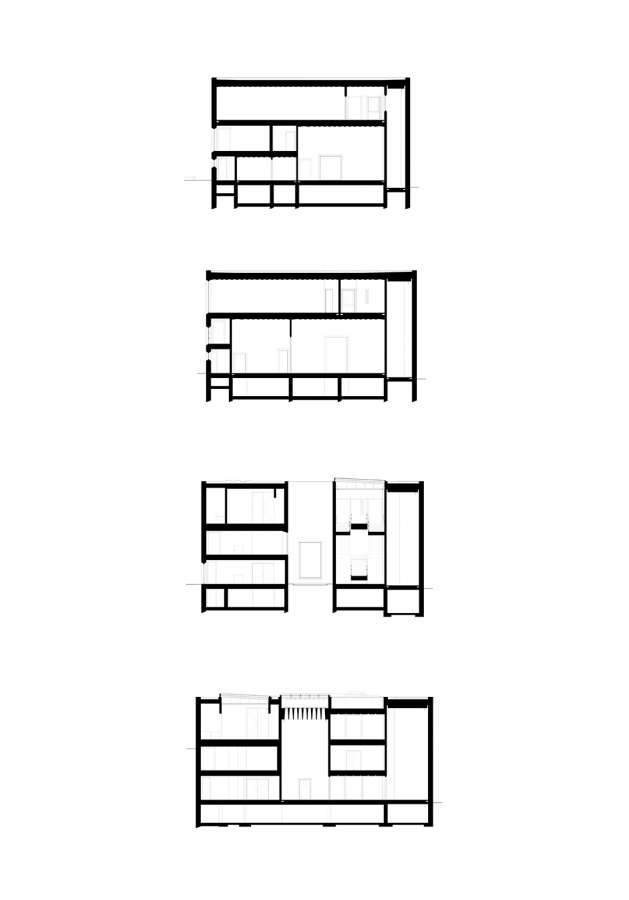n09 - z33, hasselt, belgium, 2011-2019
Z33 belongs to the Beguinage of Hasselt, a monument and a part of the city.
The historical complex resembles an island in the urban tissue, due to the exceptional size of the void and for the permanency of its border through history, an incongruous but continuous system of brick constructions.
Z33 is part of this wall of buildings around the park. The park is the centre.
The design aims to promote it as place of rest, with a different sound from the bustling of the city centre.
The protection is given by the layering of the built border with its varying degrees of privacy: the park, the Begjinhof gardens, walls and gates, the plants and the herbs, the almost blind wall of the Jenever Museum and its silent chimneys, the modern severity of Vleugel’58, the solid opening of the Poortgebouw.
The house for contemporary art is one building made of two: the exisiting Vleugel ’58 and the extension building.
Vleugel’58 will remain a sequence of “chambres d’exposition”, a classical infrastructure of room with fine proportions and a certain degree of anonymity. The extension building is an ensemble of simple rooms that vary in size, proportion and light atmosphere and that overlook each other through the others: the complexity of the spatial pattern echoes the multiplicity of experiences of a city, with gradients between public and private, exposed or intimate.
The facade is the most delicate part of the project: it is the expression of the “house” towards the street.
The facade is bound to the brick architecture of the context: a continuous traditional solid masonry with variations in colour and size of both bricks and joints. It is an innovative construction of a double solid wall: an interior warm structure coupled with an exterior cold structure, which has movement in relation to temperature variations.
The design sets the goal of the construction of a solid façade in line with the traditional masonry, developing a solution, which is congruent and feasible with the technical knowledge and production possibilities of the present day.
This can be achieved by building the exterior wall of the façade as a solid composite reinforced brick-mortar wall, reducing to a mimimum the quantity of dilatation joints.
Walking along the street people experience the quietness of a long solid brick wall and a few openings from which one is overlooked by leaves and branches.
